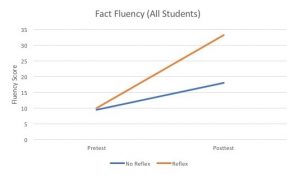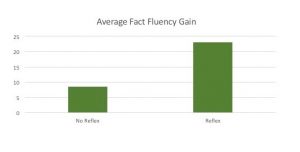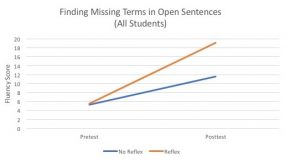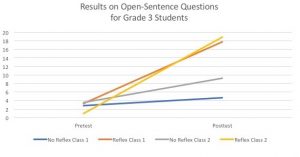Math fact fluency study in Houston, Texas elementary schools
Ten classes of students at two Houston, Texas area elementary schools participated in a math fact fluency study during the 2016-17 school year.
The students came from two schools: Rosehill Elementary in Tomball Independent School District, and Bruce Elementary in Houston Independent School District. Out of the ten classes, there were two grade 2 classes, six grade 3 classes, and two grade 4 classes.
Half of the participating classes used Reflex, a math fact fluency system, and the other half used other fact fluency methods (flash cards, etc.). All the students were given a pretest in late September 2016, and a posttest in May 2017.
The schools
Rosehill Elementary in Tomball ISD is a rural elementary school with 482 students and is a Title I school with 42% of its students on free or reduced lunch.
Bruce Elementary in Houston Independent School District is an urban elementary school with 615 students. It is a Title I school with 96% of its students on free or reduced lunch.
Skills measured
The study measured gains in two key math competencies: fluency with math facts and ability to determine the missing value in an open sentence—for example 4 x ___ = 36 or ___ – 8 = 4. Recent research shows that both competencies are predictive of students’ scores on high-stakes achievement tests. [Citation: Stevens, O. & Leigh, E. (2012), “Mathematics curriculum based measurement to predict state test performance: A comparison of measures and methods.”, ProQuest LLC]
The ability to determine missing terms in open sentences has obvious tie-ins to algebra readiness. It is also a skill directly referenced in the math Common Core State Standards:
CCSS.MATH.CONTENT.3.OA.A.4: Determine the unknown whole number in a multiplication or division equation relating three whole numbers. For example, determine the unknown number that makes the equation true in each of the equations 8 × ? = 48, 5 = _ ÷ 3, 6 × 6 = ?
Math fact fluency


Finding missing terms in open sentences

A closer look at four grade 3 classrooms

Students in the Reflex classrooms had similar pretest scores to those in the classrooms using traditional methods, but the classes using Reflex were significantly ahead by the end of the year.
Teacher perspectives
Teachers observed positive changes in their students who used Reflex. A 2nd grade teacher at Rosehill Elementary School said, “I noticed my students growing in their abilities which led to an increased confidence.” And a 3rd grade teacher at Bruce Elementary School said, “I am very pleased with Reflex. It has worked wonders for my students!”
This article was originally published by ExploreLearning.



